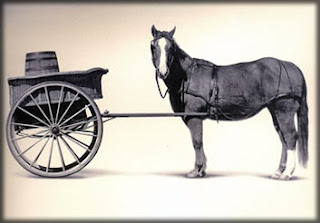According to
the CDC, the E. coli-affected lettuce has been linked to the Yuma, Arizona,
growing region, but so far no individual grower, supplier, distributor, or
brand has been identified. The CDC advises everybody to avoid buying or eating
romaine lettuce from a grocery store or restaurant unless the romaine is known
to not be from the Yuma, Arizona, growing region. Orlando Sentinel April 24, 2018
Same Old Thing
Years ago
one of my colleagues and I at John Deere FoodOrigins attended several fresh
produce and food processor trade shows in an effort to poll companies in that
business sector concerning their capabilities to trace and track their products
in the supply chain. The answer from each of these agri-food entities was the
same – WE HAVE IT!
Of course
they have it but then the follow up
question was just how good their traceability was? It is not a binary thing, it
is a level of sophistication, rigor and procedural issue. How does one measure
their ability to trace backward or track forward in the chain? Since there are
no standards once one delivers the answer to the first question then there is
no need for any follow up.
Not So Great
So how does
an entire variety of lettuce from THE primary growing region for leafy greens this
time of year have a Schwarzenegger-like “Total Recall”? I would venture to say
that while there are only a handful of companies growing, buying, packing and packaging
Romain Lettuce not one of them could tell the market – it’s not mine and I can
prove it.
Food
products that are comingled at a plant or in a bin or elevator, like grain, can
be difficult to identify the exact origin of those finished goods. That being
said one should have the wherewithal to isolate a contaminate if it can be isolated
at the last link in the chain prior to being ingested by some unfortunate
consumer.
It Ain't Easy
Traceability
is hard. It requires a set of protocols that are both tedious and onerous. Yet
the importance of such practices are evident when the entire country is
throwing out their salad makings just in case it is tainted with E. Coli. The
cost to the industry must be enormous not just in this single event but for
some time to come as consumers may shy away from all lettuce products for some
period of time.
Contrary to
popular beliefs this is not about bar codes and RFID technologies. Putting a
sticker on the box, bag or bin does not solve the problem. It may help
streamline the process but it does not replace it.
Measure to Manage Requires Standards
My guess is
that there are a number of CEOs of food processing companies that might be
asking the question that we asked many years ago – “How good is our
traceability?” Without a set of standards for measuring it the answer might be
that most people just don’t know, oh, and there are no standards.












